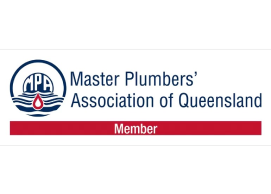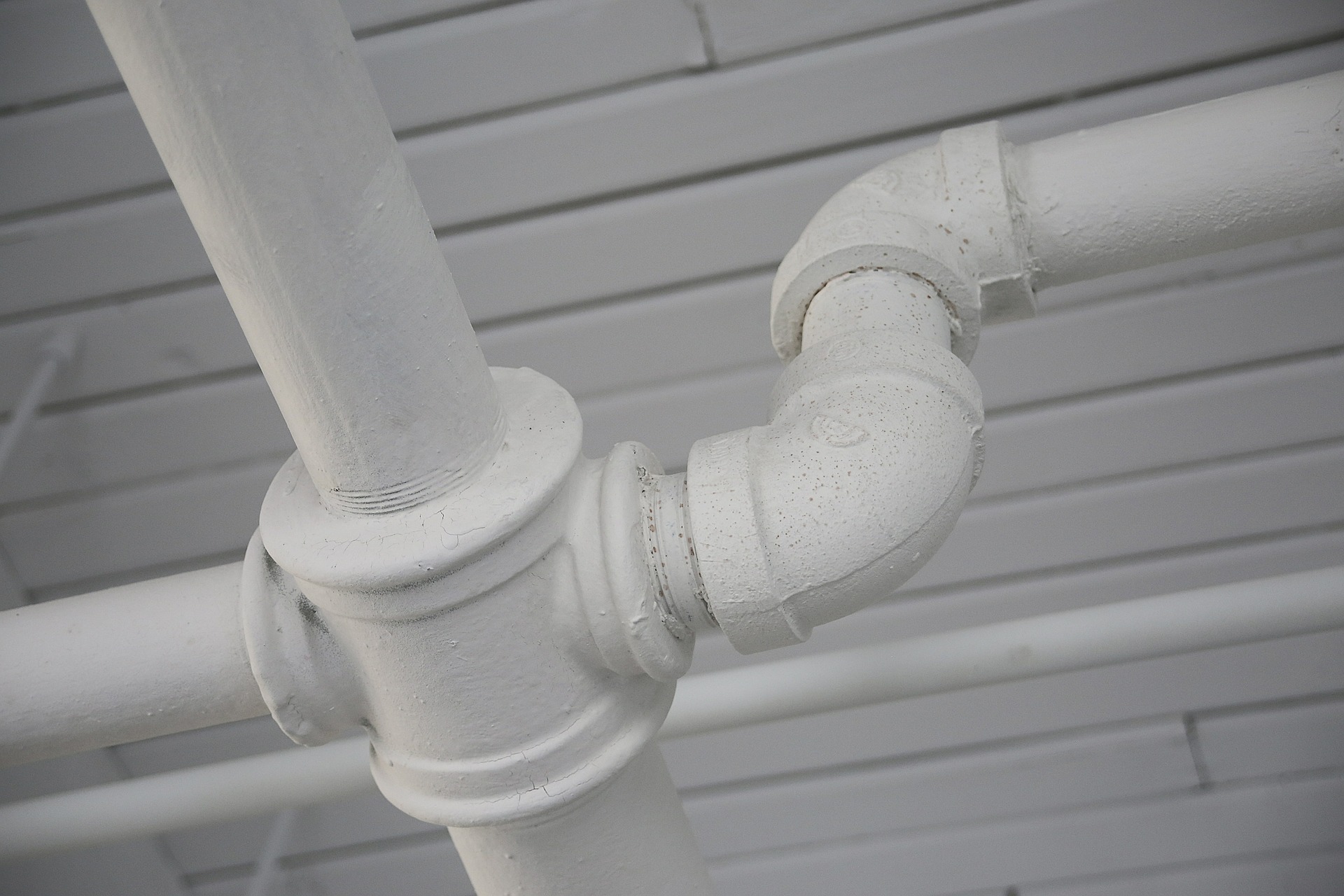
Tree Roots
The most common reason why people get blocked drains is because of tree roots. Living in such a beautiful, leafy, green city has its downside. Tree roots can enter a pipe many different ways but the most common is through a crack in the pipe. Cracks in pipes are caused by ground movement, material fault, poor installation or by large tree roots putting pressure on the pipe. Earthenware pipes (clay pipes) are very common in the older suburbs of Brisbane. This type of pipe is quite hard and brittle and will crack easily. It also is sealed using a rubber gasket which degrades over time also allowing tree roots to enter. Many houses built before the 1980s will have earthenware pipes below the ground. Over the year’s tree roots enter these cracks, often making the cracks even larger allowing more roots to enter the drains. Hydro jetting unblocks the drain quickly and removes the tree roots from the full internal bore of the pipe.Collapsed or Damaged Pipes
Pipes can also be damaged or collapsed over time. Damaged pipes can be caused by construction processes, heavy equipment driving above, severe ground movement and many other possibilities. When this happens, we can identify the problem using our camera inspection equipment. A high definition recording of the damage can be supplied to you via USB should you require it. Using our radio frequency locator, we can accurately locate the issue and even determine the depth. Old, deteriorated pipes are very common in older areas of the city, often even when there are no tree roots to promote more extensive cracking.Grease
In restaurants, commercial kitchens and even at home, grease builds up in drains leaving only a small aperture for the waste to pass through. Commercial kitchens often drain to a grease trap which catches the grease before entering the council sewer. These grease traps require pumping out at regular intervals however the pipes that drain in to them are often left unchecked. Hydro jetting will dislodge the grease and flush it through. We use a grease dissolving product called grease blaster which prevents grease sticking to the pipe further down after it is flushed out. This prevents similar issues from reoccurring in the future.Sand, Silt and other Debris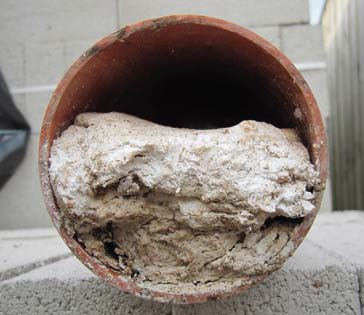
Sand and silt can often enter pipes particularly storm-water drains. A hydrojetter easily flushes the sand through and unblocks the pipe.
Concrete occasionally enters drains during construction work however it is a simple process to remove using a hydrojetter. Other debris can have a similar clogging effect when stuck in pipes. As junk gets caught in the pipe and builds up over time, it can cause nasty problems with blocking other things from draining away and build up to further issues.
Click to call 
Choosing the right toilet can be a challenge and more often than not usually ends up in numerous trips to the DIY store and a waste of your own time and money.
If you follow this guide below you can save the hassle by picking the right toilet suite to suit your home and its existing infrastructure.
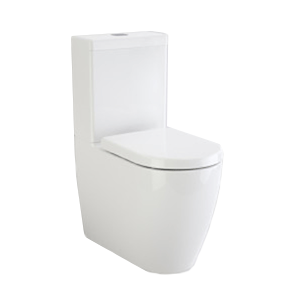 Back to wall toilet suites sits flush against your bathroom wall. This means that there are no gaps between the wall and toilet at all. This type of toilet is very modern in design suiting contemporary style bathrooms. As back to wall suites have no gaps they are also easier to clean.
Back to wall toilet suites sits flush against your bathroom wall. This means that there are no gaps between the wall and toilet at all. This type of toilet is very modern in design suiting contemporary style bathrooms. As back to wall suites have no gaps they are also easier to clean.
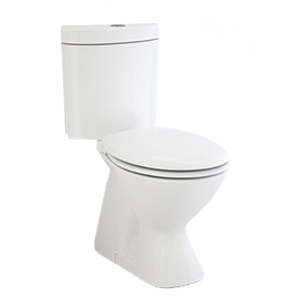 Close Couple suites have the toilet pan and cistern joined so you cannot see the flush pipe. This type of toilet will suit all types of bathrooms and is very traditional.
Close Couple suites have the toilet pan and cistern joined so you cannot see the flush pipe. This type of toilet will suit all types of bathrooms and is very traditional.
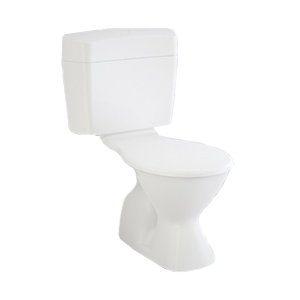 Connector suites are the most traditional types of toilets with the cistern joined to the pan by as plastic flush pipe and connector plate. This type of toilet allows for the greatest level of flexibility during installation.
Connector suites are the most traditional types of toilets with the cistern joined to the pan by as plastic flush pipe and connector plate. This type of toilet allows for the greatest level of flexibility during installation.
Types of toilet available:
Back to Wall Toilet Suites
 Back to wall toilet suites sits flush against your bathroom wall. This means that there are no gaps between the wall and toilet at all. This type of toilet is very modern in design suiting contemporary style bathrooms. As back to wall suites have no gaps they are also easier to clean.
Back to wall toilet suites sits flush against your bathroom wall. This means that there are no gaps between the wall and toilet at all. This type of toilet is very modern in design suiting contemporary style bathrooms. As back to wall suites have no gaps they are also easier to clean.
What you need to know before installing a back to wall toilet suites
Toilet Pan Set out:
Measure from the wall to the center of waste where the toilet goes into the ground this will usually be in range from 120mm-200mm.Water Inlet for toilet cistern
Now you have made your mind up on the toilet you need to make sure you have the right water entry point most toilets have a bottom water entry point with a mini cistern cock on the wall. The modern back to wall suite have a rear or back entry water point that is concealed at cistern height. This position is very particular to the make and model of suite and will very between brands.Floor Level
The modern back to wall suite unfortunately has one weakness in its installation versatility and that is that it’s not able to be installed in positions with medium/large fall. If your floor falls away noticeably to a floor grate unfortunately a back to wall suite in not going to be flexible enough to fit in this circumstance. Skirting tiles When installing a back to wall suite in most circumstances if the walls are not tiled above the level of the toilet suite than the skirting tiles will need to be removed so that the pan can go back flush against the wall. A tiler or handy man will be required to cut and replace the tiles removed for installation at an extra cost.Skirting tiles
When installing a back to wall suite in most circumstances if the walls are not tiled above the level of the toilet suite than the skirting tiles will need to be removed so that the pan can go back flush against the wall. A tiler or handy man will be required to cut and replace the tiles removed for installation at an extra cost.Close Couple Suites
 Close Couple suites have the toilet pan and cistern joined so you cannot see the flush pipe. This type of toilet will suit all types of bathrooms and is very traditional.
Close Couple suites have the toilet pan and cistern joined so you cannot see the flush pipe. This type of toilet will suit all types of bathrooms and is very traditional.
What you need to know before installing a Close Couple Suites wall toilet suites
Toilet Pan Set out:
Measure from the wall to the center of waste where the toilet goes into the ground this will usually be in range from 120mm-200mmWater Inlet for toilet cistern
Now you have made your mind up on the toilet you need to make sure you have the right water entry point most toilets have a bottom water entry point with a mini cistern cock on the wall. The modern back to wall suite have a rear or back entry water point that is concealed at cistern height. This position is very particular to the make and model of suite and will very between brands.Connector Suites
 Connector suites are the most traditional types of toilets with the cistern joined to the pan by as plastic flush pipe and connector plate. This type of toilet allows for the greatest level of flexibility during installation.
Connector suites are the most traditional types of toilets with the cistern joined to the pan by as plastic flush pipe and connector plate. This type of toilet allows for the greatest level of flexibility during installation.
Types of Pans
S-trap Toilet Pans
S-trap Toilet Pans are the most commonplace in Australia. It is identified with the toilet waste of the trap connecting directly into the floor-mounted pan collar.P-trap Toilet Pans
P-trap version pans have horizontal outlet waste which connects into a pan collar mounted on the wall.Skew trap toilet pans
Skew trap version pans are available in left and right hand models with a horizontal or angled outlet waste which is offset at 90° and connects directly into a pan collar mounted on a side wall. Sometimes this is not visible due to the pan style and design if this is the case then a safe rule of thumb is if you currently have a close coupled or back to wall toilet suite than the same style of suite will be versatile enough to fit.
Keeping your energy bills down is really important. There are many things you can do to help.
For example:
- Electric hot water system on full tariff can be expensive to run. You may be able to switch lower cost “off peak” tariff. Check with your energy provider or ask your electrician / installer about options available to you.
- High efficiency, solar and heat pump water heaters can be a lower running cost alternative, particularly compared to an electric water heater on continuous tariff or an older.
- Temperature Pressure Relief Valve can be found on storage models only. It is always near the top of the water heater, at the same level as the hot water outlet.


